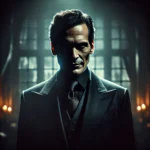When it comes to promoting a film, the movie trailer is arguably the most important marketing tool. A well-crafted trailer can generate buzz, build anticipation, and, most importantly, make audiences eager to buy tickets. But what goes into making a great movie trailer? Let’s explore some of the tricks and techniques that the best in the business use to hook viewers from the first frame.
Tell a Concise Story
A trailer is a mini-narrative that gives the audience a glimpse of the movie’s plot. However, it should never give away too much. The goal is to tease, not spoil. Trailers need to strike a delicate balance between showing enough exciting or intriguing moments to draw in the viewer and leaving out crucial plot twists or reveals.
Key Points:
- Introduce the protagonist and the main conflict.
- Maintain mystery by withholding key plot details.
- Use cliffhangers to leave the audience wanting more.
Master the Art of Pacing
Pacing is crucial for keeping the audience’s attention. Trailers typically run between 90 seconds and 2.5 minutes, which isn’t much time to tell a compelling story. The pacing should reflect the film’s genre: fast cuts and high energy for action films, slow-burn builds for horror, or a steady rhythm for dramas.
Techniques:
- Start slow and gradually build momentum.
- Time cuts with musical beats or sound effects to create impact.
- Include dynamic shifts in tone to keep viewers engaged.
Use Music to Set the Tone
Music is one of the most powerful tools in trailer production. A well-chosen score or song can evoke the right emotions, whether it’s tension, excitement, or nostalgia. Music in trailers often shifts to emphasize key moments, helping the pacing and emotional arc of the teaser.
Common Approaches:
- Use recognizable songs to appeal to a broad audience.
- Commission original trailer music for a more tailored emotional punch.
- Employ silence or minimal sound during key moments to enhance tension.
Utilize Voiceovers and Text On Screen
Voiceovers can guide the viewer through the trailer’s narrative without relying solely on visuals. Similarly, on-screen text helps convey important details like the release date or the film’s tagline. When used properly, these elements can heighten anticipation without detracting from the visuals.
Effective Strategies:
- Keep voiceovers short and impactful.
- Use text to highlight key selling points (e.g., “From the creators of…”).
- Incorporate character dialogue to showcase the film’s tone and style.
Focus on Visual Appeal
Trailers are often packed with visually striking scenes to capture attention. Cinematic shots, special effects, and action sequences are chosen carefully to present the film as a must-see visual experience.
What Works:
- Showcase high-quality visual effects for blockbusters.
- Highlight unique cinematography for indie films.
- Use color grading and editing tricks to make key scenes stand out.
Leave a Lasting Impression with the Final Shot
The last few seconds of a trailer are critical. This is the moment that will stay with the viewer after the trailer ends. Whether it’s a shocking reveal, an iconic line of dialogue, or a dramatic action sequence, the final shot should compel the audience to want to see more.
Key Tactics:
- End with a cliffhanger or an unanswered question.
- Tease the film’s biggest action set piece or twist.
- Use the final shot to emphasize the film’s release date or a strong call to action.
Test and Adjust
Even the best trailers go through multiple revisions. Feedback from test audiences and marketing teams helps fine-tune the pacing, music, and content of the trailer. Every element should be meticulously polished to ensure it resonates with the target audience.
Revision Techniques:
- Gather feedback from focus groups to identify weak points.
- Re-edit based on early audience reactions to make sure the key moments land.
- Ensure that the trailer appeals to both fans of the genre and general audiences.
A great movie trailer is a carefully crafted blend of storytelling, visual appeal, and emotional resonance. By employing key techniques like controlled pacing, impactful music, and compelling visuals, trailer creators can make audiences eagerly await the film’s release. When done right, a trailer becomes more than just a marketing tool; it becomes a piece of art that stands on its own.


